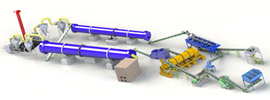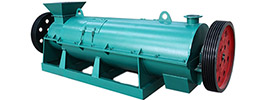I. Market Size and Growth Dynamics
- Overall Expansion
- The global fertilizer market reached 381.7billionin2024andisprojectedtogrowto541.2 billion by 2030, with a CAGR of 5.99%. While synthetic fertilizers dominate, eco-friendly alternatives like biofertilizers and organic fertilizers are experiencing rapid growth.
- Regional Disparities: Asia-Pacific accounts for 44.8% of global production, with China as the largest exporter (25% of the global share). Europe (15.1%) and North America (17.8%) follow closely.
- Demand Drivers
- Population Growth and Food Security: Rising global population (projected to reach 9.7 billion by 2050) and shrinking arable land drive fertilizer demand.
- Government Support: Subsidies in India, Brazil, and China incentivize fertilizer use to boost agricultural output.
II. Product Portfolio Evolution
- Synthetic Fertilizers Dominate, but Growth Slows
- Nitrogen, phosphate, and potash (NPK) fertilizers remain mainstream, though environmental pressures slow their growth (CAGR ~-2.62%).
- Technological Innovation: Controlled-release and water-soluble fertilizers gain traction. China’s water-soluble fertilizer market, for example, is expected to exceed $15 billion by 2025 (CAGR 8–10%).
- Biofertilizers and Organic Fertilizers Accelerate Adoption
- Market Growth: The global biofertilizer market, valued at 2.31billionin2023,isprojectedtoreach227 billion by 2028 (CAGR >8.5%).
- Drivers: Rising demand for organic food and stringent environmental policies (e.g., EU restrictions on synthetic fertilizers) spur adoption.
- Regional Trends: High penetration in Europe/North America but cost barriers persist; Asia-Pacific sees rapid growth due to policies like China’s “organic fertilizer substitution” trials.
III. Regional Market Dynamics
- Asia-Pacific: Primary Growth Engine
- China: The largest consumer, with a market size of ¥123.5 billion (2024). Policies promote water-fertilizer integration (e.g., subsidies in Shandong, Xinjiang).
- India & Southeast Asia: Phosphate and potash demand grows 6–8% annually due to population growth.
- Latin America & Africa: Emerging Opportunities
- Latin America: Agricultural expansion in Brazil and Argentina drives nutrient demand, projected to rise 10% by 2028.
- Africa: Demand expected to grow 25% (2 million tons) by 2030, though infrastructure gaps persist.
- Europe & North America: Structural Shifts
- Europe: Organic fertilizers gain 30% market share (led by France, Germany) amid strict regulations.
- North America: Precision agriculture (e.g., GPS-guided fertilization) drives demand for customized products.
IV. Challenges and Strategic Responses
- Key Challenges
- Raw Material Volatility: Geopolitical tensions (e.g., Russia-Ukraine conflict) disrupt gas and phosphate prices.
- Supply Chain Risks: Trade restrictions (e.g., Belarusian potash export bans) cause regional shortages.
- Environmental Pressures: Overuse contributes to pollution and emissions, tightening regulations.
- Industry Adaptations
- Technology Innovation: Development of slow-release fertilizers and biostimulants (e.g., poly-γ-glutamic acid) improves efficiency.
- Sustainability Transition: Firms like China’s Genliduo expand organic fertilizer capacity and adopt low-carbon processes.
- Market Diversification: Trade rerouting (e.g., Canada filling EU potash gaps) mitigates supply risks.
V. Future Outlook
- Premiumization and Functionalization: Fertilizers will integrate biotechnology (e.g., microbial agents) and nanomaterials for precision nutrition.
- Digital Integration: IoT and AI enable precision farming, reducing waste (global digital agriculture market projected to exceed $30 billion by 2030).
- Policy-Driven Shifts: Carbon neutrality goals prioritize low-carbon fertilizers (e.g., calcium ammonium nitrate) and circular economy models (e.g., livestock waste recycling).
Conclusion: The global fertilizer market is undergoing a transformation, balancing traditional synthetic products with eco-friendly alternatives. While Asia-Pacific and Africa offer growth potential, stakeholders must navigate raw material volatility and regulatory shifts to capitalize on opportunities in precision agriculture and sustainability.
 Send us a Email
Send us a Email Wulong Industrial Cluster
Wulong Industrial Cluster Have any question?
Have any question?



















